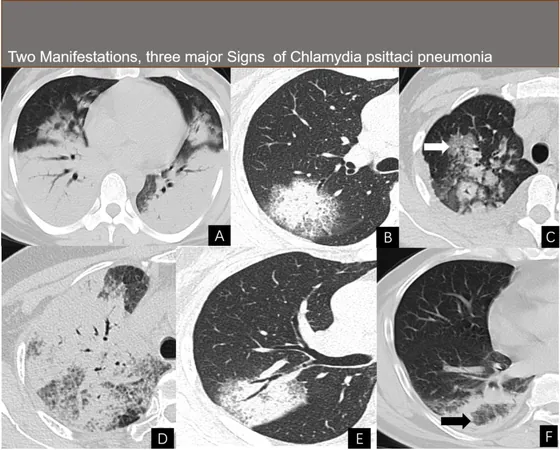
Unveiling Chlamydia Psittaci Pneumonia: The Alarming Rise of a Rare Infection and Its Detectable Signs!
2025-01-03
Author: John Tan
Key Symptoms and Clinical Presentation
All patients presented with fever and respiratory distress. Specific symptoms included cough (70%), sputum production (56.2%), wheezing (37.5%), and in some cases, chest pain (18.8%). Alarmingly, 18.8% of cases evolved into severe pneumonia, revealing the potentially debilitating nature of this infectious disease. Additionally, many patients also reported gastrointestinal disturbances and neurological symptoms, such as headache and dizziness. Laboratory findings further highlighted the atypical presentation of this disease, with 100% of patients exhibiting elevated levels of C-reactive protein, a marker of inflammation, while most maintained a normal white blood cell count—an unusual indicator in pneumonia cases.
CT Scan Insights: An Essential Diagnostic Tool
Chest CT imaging has proven crucial in monitoring the progression of pneumonia caused by C. psittaci. Findings revealed varied distributions: 51.3% of patients showed unilateral lung involvement, while nearly half (48.8%) experienced bilateral lung afflictions. The imaging not only displayed patterns consistent with lobar pneumonia in 80% of cases but also unveiled distinctive CT signs, such as the air bronchogram sign observed in 87.5% of patients and the intriguing reverse halo sign noted in almost half of the scans. These imaging features provide vital clues in differentiating Chlamydia-related pneumonia from other bacterial infections.
The Growing Concern of Psittacosis
The alarming increase in reported cases of psittacosis pneumonia calls for heightened awareness and clinical diligence. Transmission typically occurs via inhalation or contact with infected avian species, making thorough patient histories critical in hospitals. Multisystem involvement, including effects on the liver and kidneys, further complicates the clinical landscape.
Treatment and Prognosis: A Beacon of Hope
The treatment regimen for C. psittaci pneumonia primarily includes doxycycline, a well-tolerated tetracycline antibiotic effective against this intracellular parasite. Remarkably, all patients in the study's cohort recovered and were discharged, marking a positive outcome with appropriate management.
Looking Ahead: Challenges and Future Directions
Despite the study's encouraging findings, limitations such as the small patient cohort and lack of control groups warrant cautious interpretation. Expanding research with larger sample sizes could better establish unique characteristics distinguishing C. psittaci pneumonia from other infectious pneumonias.
Conclusively, heightened awareness of Chlamydia psittaci pneumonia's clinical signs, imaging characteristics, and historical correlations with poultry exposure is essential for early diagnosis and treatment. As the incidence of this rare infection continues to rise, clinicians must stay alert to provide timely and effective care for better patient outcomes. Stay informed, and don’t underestimate the potential threats lurking behind that charming pet bird!

 Brasil (PT)
Brasil (PT)
 Canada (EN)
Canada (EN)
 Chile (ES)
Chile (ES)
 Česko (CS)
Česko (CS)
 대한민국 (KO)
대한민국 (KO)
 España (ES)
España (ES)
 France (FR)
France (FR)
 Hong Kong (EN)
Hong Kong (EN)
 Italia (IT)
Italia (IT)
 日本 (JA)
日本 (JA)
 Magyarország (HU)
Magyarország (HU)
 Norge (NO)
Norge (NO)
 Polska (PL)
Polska (PL)
 Schweiz (DE)
Schweiz (DE)
 Singapore (EN)
Singapore (EN)
 Sverige (SV)
Sverige (SV)
 Suomi (FI)
Suomi (FI)
 Türkiye (TR)
Türkiye (TR)
 الإمارات العربية المتحدة (AR)
الإمارات العربية المتحدة (AR)